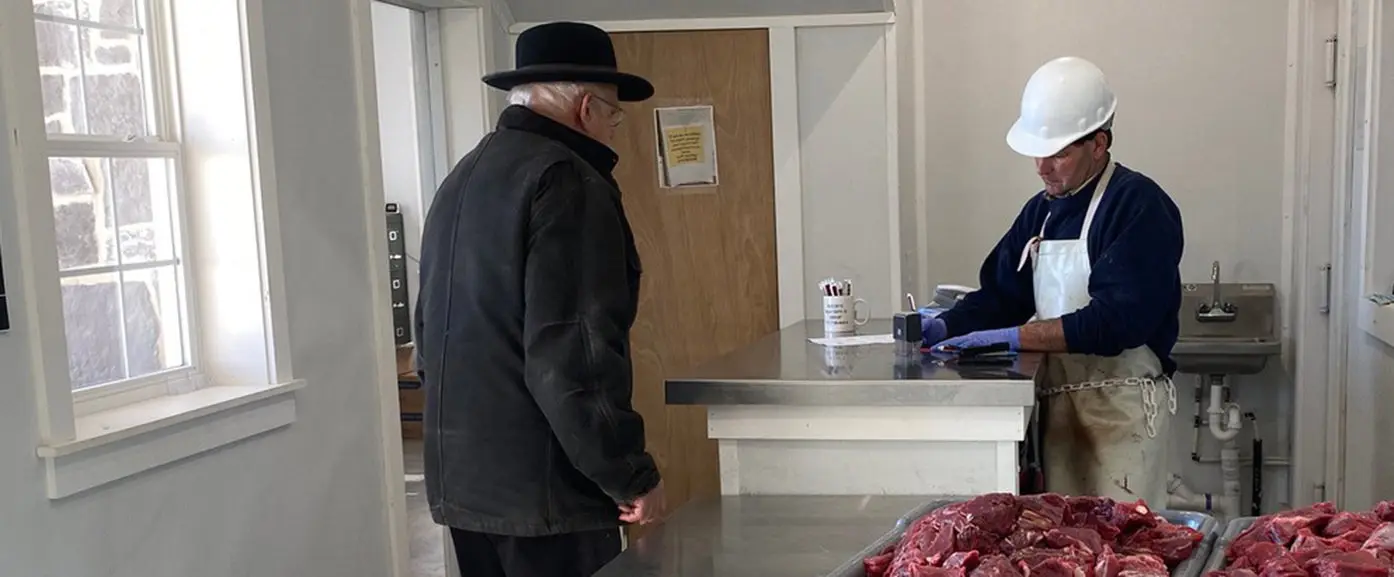
Written by Art Petrosemolo
Every time I think I have seen it all here in Lancaster County, I get surprised… sometimes overwhelmed… It was the case again in late January as I spent a couple of hours on an Old Order Mennonite Farm while the family butchered and processed two hogs and a steer. It was my third visit to butchering day but as a city kid, you never get used to it.
And a few days later, I found myself deep into the coolers of well-known local meat stores as I research a story for Lancaster Farming on custom butchering – a skill handed down from fathers to sons in Lancaster County – and a big business here. Who would have guessed there are 85 custom butchers alone in Lancaster County?
Since I moved to Garden Spot three-plus years ago, I have called these “trips,” adventures and these visits fit the name perfectly.
We are so fortunate in our area to have access to farm-fresh fruits and vegetables as well as poultry, pork and beef. In the good old days, Henry Zimmerman, Sr. of Zimmerman’s Custom Butcher Shop in Lititz told me, butchers actually loaded their wagons with knives and the tools of the trade and made the rounds to neighboring farms to slaughter and process animals for the owner’s table. Much of the meat and pork was preserved by salting, seasoning or canning as it was way before freezers.
I became fascinated with small, custom butchers who are known for their baloney rolls, smoked pork chops, bacon and more bacon and the like. Since 1967 and the passage of the Wholesome Meat Act that mandated that all beef and pork for retail purchase had to be killed at USDA slaughter houses, the non-USDA custom butcher industry has changed. Now to work with a custom butcher, you either have to bring him an animal or work with him with a small group to purchase an animal and share the meat in quarters, etc. after it is butchered and processed and many people still do that.
Custom butchers also can sell you steaks, pork chops and baloney rolls by the pound if they purchase large sides of beef and pork from a USDA butcher. They cut it up and process it for the retail market. That business is growing by leaps and bounds and has kept a lot of these small shops in business.
And looking at the true, retail butchers, in our area, there is no one bigger than Stoltzfus Meats in Intercourse. Myron Stoltzfus has an 8,700 square foot store that is a meat-lovers paradise. His grandfather started as a custom butcher operation on their Intercourse farm in the 1950s. Myron’s dad started selling produce and meat at the New Castle Farmers Market in New Castle, Delaware, and the business began to move away from raising, slaughtering, and butchering animals to butchering only for wholesale and retail. Stoltzfus buys large portions of beef and pork now from USDA facilities and processes it into bacon, baloney, steaks, chops and the like for his wholesale and retail customers.
To research a story like this, you have to get your shoes bloody and see all phases of the custom butchering operation from live animal to pork chops and I did. I was fortunate to meet patient butchers who explained the process to me and took great pride in showing me their operations and paid particular attention to the smokers that many think set their meats apart from the competition. Yes, I tasted beef baloney and pepperoni from Mount Joy to Intercourse and loved it all.
I got so interested in the industry that I have started research now on the goat and lamb market as it relates to the Muslim feasts for their big spring holidays. The trade is called “Exotic Meat” and is growing big time in Lancaster County as many former dairy farmers look for something to replace their milk business.
I spent a long summer in Cairo, Egypt in the 1960s when I was in College with a group called Crossroads Africa. I ate goat for at least one meal every day for weeks and weeks and weeks. I can’t remember what it tastes like and I don’t think I want to remember.
As I write this I also am doing a story on a young man from Ephrata who organizes cruise vacations – Sing and Sail – for conservative Christians including Plain Community Amish and Mennonites. You’ll hear about it in my next blog.
I just can’t seem to turn around lately without finding something interesting to write about.